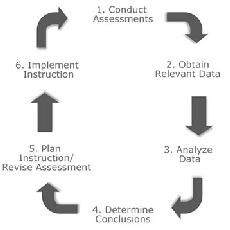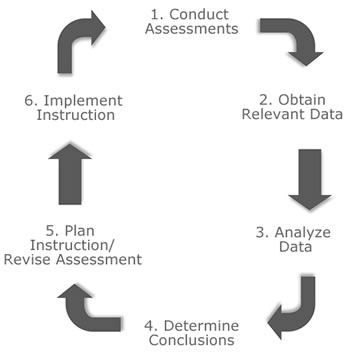 FMHS Everything Teaching
FMHS Everything Teaching
Evaluation
Identify the purpose of assessment
A teacher must work out how to determine whether the assessment practice is fit for purpose. This means that teachers must, in the first instance, be clear about the purpose of assessment. If you think about any particular assessment that you deliver, then you might identify a number of purposes (both formative and summative).
- Diagnosis (to clarify the type and extent of learners’ learning difficulties in light of well-established criteria, for intervention);
- Screening (to identify learners who differ significantly from their peers, for further assessment);
- Qualification (to decide whether learners are sufficiently qualified for a job, course or role in life – that is,
whether they are equipped to succeed in it – and whether to enroll them or to appoint them to it); - Licensing (to provide legal evidence – the license – of minimum competence to practice a specialist activity,
to warrant stakeholder trust in the practitioner); - Certification (to provide evidence – the certificate – of higher competence to practice a specialist activity, or
subset thereof, to warrant stakeholder trust in the practitioner); - Programme evaluation (to evaluate the success of educational programmes or initiatives, nationally or
locally); - Comparability (to guide decisions on comparability of examination standards for later assessments on the
basis of cohort performance in earlier ones)
Therefore, the first step in evaluating your assessment practices is to identify the purpose(s) of each assessment practice.
Good starting questions for an evaluation include;
- How does the performance of students on this assessment compare with their performance on other assessments?
- Are there any question items that are outliers or did not produce the expected results?
- How do students and staff feel about the assessment? Were there any practical issues that need to be addressed in future?
Based on your evaluation, you may then need to alter the assessment to improve reliability and validity.
You might also need to reconsider the alignment of the assessment with the teaching and learning activities and the learning outcomes. Whenever students perform in an unexpected way, there is usually a mis-alignment between these areas. Misalignment may lead to a revision of the learning outcomes, to re-designing teaching and learning activities or to changing the assessment to ensure validity. Changes of this sort are made at stage 5 in Figure One. Planning instruction can include rewriting learning outcomes and/or re-designing teaching and learning activities. Revising an assessment can include re-writing assessment instructions and/or questions to improve reliability. Revising an assessment can also include removing questions and/or adding new questions to ensure validity.
Portfolio Possibilities
 Check
Check
- Are my assessments fit for purpose?
- Do I evaluate my assessment practices on a regular basis?





